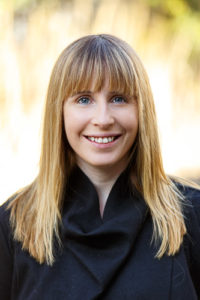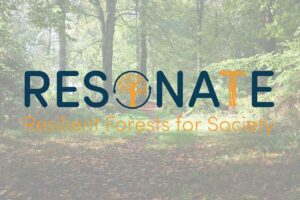It’s now less than 3 months until Trees, People and the Built Environment 4 – our triennial conference on urban greenspace. In advance of the conference we’ll be presenting a series of interviews with some of our featured speakers. This interview is with Keynote Speaker Yvonne Lynch, Urban Greening Strategist for the Royal Commission for Riyadh City.

Yvonne is an urban greening and climate resilience strategist. She advises governments internationally on urban greening. Yvonne is currently  collaborating on the development and implementation of Green Riyadh with the Riyadh Development Authority. Green Riyadh aims to create 3300 new parks and gardens, and to plant 7.5 million trees by 2030.
collaborating on the development and implementation of Green Riyadh with the Riyadh Development Authority. Green Riyadh aims to create 3300 new parks and gardens, and to plant 7.5 million trees by 2030.
She has advised local and state governments around Australia and internationally on how to green cities and adapt to extreme climate conditions. She established and led City of Melbourne’s Urban Forest and Ecology team, garnering multiple innovation and leading practice awards over several years.
Tell us about your presentation:
In the presentation, I will explore how we can shift our perspectives of urban design and planning away from the traditional approaches that have dominated our thinking about cities for over a century. I will discuss how we can position urban greening as a critical component for creating a liveable and resilient city. I will also look at how we can achieve longevity in policy outcomes and accelerate implementation for urban greening. Case studies from Melbourne, Australia and Riyadh, Kingdom of Saudi Arabia will provide a focus for the presentation.
Why is your presentation important for our conference?
Policy and strategy development are the first steps in greening our cities, but so often the robust and innovative strategies and polices that governments develop are left sitting on the proverbial shelf unloved, ignored and forgotten! Understanding how we can advance the implementation of these documents is the key to making a change. I will talk about how we can ensure these documents are embraced and actually implemented. This is an important topic because comprehensive urban greening remains a challenge for many governments. If we can achieve better outcomes from government, this will have a positive and enabling impact for industry.
What impact is your work making in the built environment?
In Melbourne, I built an extraordinary team of very talented professionals over almost a decade to deliver what is now recognised as a leading urban forestry program globally. The work we achieved together, with the support and advocacy of a very engaged political leadership team, has resulted in increased canopy cover for Melbourne city, a more diverse and resilient tree population, a significant increase in tree planting survival rates and a reduction in tree removals for development. We also fostered high levels of community participation in urban forestry and ecology programs and increased awareness of the importance of nature in the city. Internationally, we raised the profile of urban trees by bestowing email addresses upon the entire urban forest!
Currently, I work with a visionary team at the Royal Commission for Riyadh City on the implementation of the Green Riyadh program. This is an US$11 billion integrated and holistic urban greening program that aims to transform the liveability of the city by creating over 3300 new parks and planting 7.5 million new trees in 10 years. Work is now underway to get the first trees in the ground.
What are the biggest challenges facing green infrastructure?
We must work relentlessly to make the business case for green infrastructure competitive and appealing. Using green infrastructure to adapt our cities to climate change is the most cost effective, sustainable and efficient way we can respond to climate change which is he most pressing urban challenge we are contending with right now. Yet, as obvious as that is for all of us involved with green infrastructure, it is often not so obvious for our colleagues, leaders and politicians who may need to approve or advance our work. We need to continually strive to change perceptions of green infrastructure from something that is regarded only for visual amenity to something that is a critical urban infrastructure that needs large-scale and ongoing investment.
How do we build resilient places for us to live in for the future?
To create the resilient cities of the future, we need to involve our communities and we need to work in multidisciplinary teams. No one person or profession holds the key for the future, and we cannot copy and paste a standard template from place to place. It is through collectives we can harness power for change and the realisation of positive outcomes for the future. When we work in cities, we must remember that each street, each park, each tree holds a special meaning or significance for someone, and we should respect that. We need to evolve the sophistication of our methods to allow for the inclusion of ideas and feedback from community members who may not be engineers, architects or arborists. These community members are subject matter experts in their locality. The places where we work, often temporarily, are the same places others live permanently.
How did you get into your role?
I started my professional career in communications working primarily with Engineers Ireland. Though that role I fostered my interest in climate change and urbanism. I was offered the opportunity to transition away from communications into environmental strategy with the City of Melbourne more than a decade ago. I was lucky to work with such an innovative city government that supported me to be creative and to take ambitious approaches to new portfolios in environmental sustainability, urban forestry and ecology. I left my role in Melbourne after a decade to take my current role in Riyadh because the scale and ambition of the program appealed to me.
Trees, People and the Built Environment 4 will unite built and natural environment professionals from around the world who are working towards the shared goal of enhancing and developing green infrastructure. This acclaimed urban trees research conference will return to the University of Birmingham on 22-23 April 2020. It is a must-attend event for those who work in urban landscapes or the built environment.
Keep up with conference developments – read the programme online, follow us @TheICF





